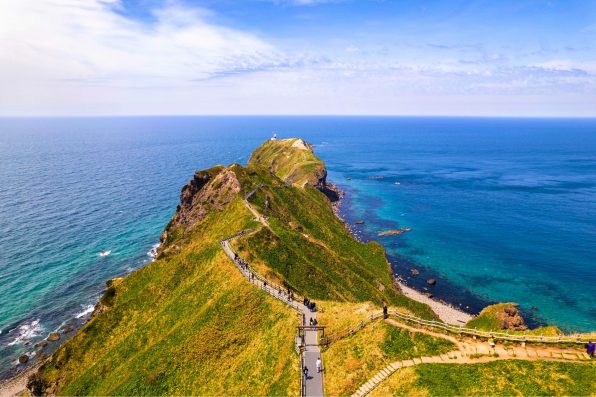Hundreds Of Tsunami Stones Sit Along The Coast Of Japan, Engraved With Warnings About Natural Disasters And Building Homes Too Close To The Shoreline

Along the coast of Japan, hundreds of tsunami stones stand tall, engraved with warnings to locals about natural disasters and the consequences of building homes too close to the coastline.
The oldest of the stones dates back 600 years ago. They range in height from two to 10 feet tall and often mark the highest point of a tsunami’s reach on the shores of Japan.
The country has endured some of the worst tsunamis in history. In 1707, the Hōei earthquake caused a tsunami that killed over 5,000 people. In 1771, the Great Yaeyama Tsunami killed 8,439 people on Ishigaki Island and 2,548 more on Miyako.
Furthermore, the Sanriku earthquake in 1896 triggered two tsunamis that decimated more than 9,000 homes and led to the deaths of at least 22,000 individuals. More recently, the 2011 Tōhoku earthquake and tsunami killed 15,894 people and injured 6,156, while 2,546 were left unaccounted for.
The tsunami stones can be found at the edge of a small village called Aneyoshi, located on Japan’s northeastern coast. Each stone features an inscription, although some are now too worn to make out.
Some of them are gravestones marking where victims are buried. Or, they serve as monuments that give death tolls from past tsunamis. Others bear dire warnings from ancestors so the generations of today can escape the same fate that was suffered in the past.
One of the stones in Aneyoshi advises residents to seek higher ground in the immediate aftermath of an earthquake since powerful waves tend to follow. Aneyoshi has undergone two devastating tsunamis. After a tsunami destroyed the village in 1896, it was rebuilt in the same place. In 1933, another tsunami struck the town, and a stone was erected shortly after.
It is four feet high and sits just above a tsunami’s reach. The slab reads, “High dwellings are the peace and harmony of our descendants. Remember the calamity of the great tsunamis. Do not build any homes below this point.”
The last four residents of Aneyoshi permanently relocated uphill once the tsunami stone was put in place, which saved them from disaster when tsunamis hit in 1960 and 2011.

longk – stock.adobe.com – illustrative purposes only
Another tsunami stone in Kesennuma, a city in the Miyagi Prefecture, says, “Always be prepared for unexpected tsunamis. Choose life over your possessions and valuables.”
The tsunami stone in Aneyoshi is the only one that specifically describes where to build houses, but some places in the region have been named according to how safe they are from tsunamis.
For instance, there are places with names such as “Valley of the Survivors” and “Wave’s Edge,” which suggest they are high enough to escape the reach of a tsunami. However, places like “Octopus Grounds” won’t withstand the destructive waves.
Over the years, as coastal towns boomed around the country, these historical warnings faded from memory.
Today, some people think the tsunami stones are outdated. Japan now has high-tech warning systems, massive seawalls, and well-marked evacuation routes.
Still, there have been calls to preserve the tsunami stones as memorials. Even with the advanced technology of the modern world, they are powerful reminders of the dangers of tsunamis that can serve as a message for future generations.
Sign up for Chip Chick’s newsletter and get stories like this delivered to your inbox.
More About:News